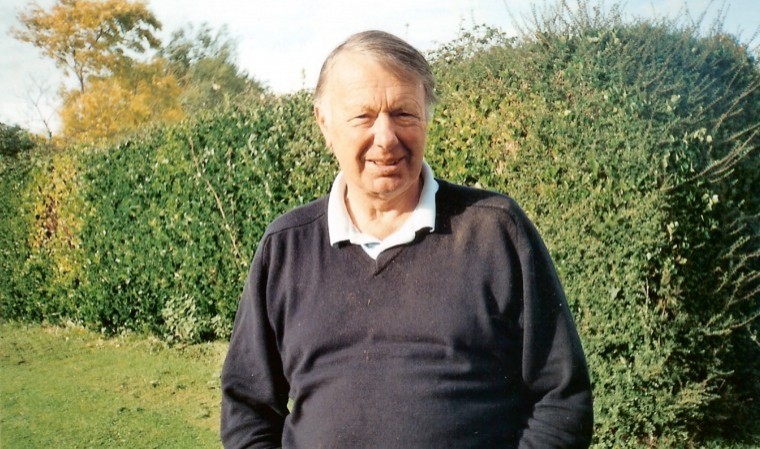Shortly before Christmas we were invited to a meeting for interested parties to discuss the viability/possibility of forming a new internal drainage board (IDB) for the area between Amberley and Pulborough in the Arun Valley. This was something of a welcome surprise, since all recent talk has been of the Environment Agency (EA) leaving the area in the lurch, without first returning the drainage infrastructure, including the Arun itself, to an acceptable state of repair after the 25 years of increasing EA neglect.
Rather too much of that meeting was spent listening to “EA think” which, apparently, goes under the name of a buzz phrase “their vision,” much of which was not related to our own particular areas of concern.
It occurred to a few of us sitting listening that this “vision” might just be losing sight of the fact that the Arun drainage work was not being turned into action. Which left us thinking that if a few more of the EA staff got a move on some progress might be made. So much time was taken that morning listening to their “vision” that any subsequent discussion of the IDB idea was somewhat time restricted.
However the resultant round table discussion brought up some interesting issues. Namely, why concentrate their “vision” so much on the problems in the Upper Rother, which flows down into the Arun, without first dredging the blocked and silted stretches of the Arun (from Pulborough to Arundel) to improve the river’s outflow? Without some positive, urgent action it follows, in severe conditions, the lower reaches around Arundel will flood even quicker and more damagingly. Surely the logical priority is to start draining from the lower end of the river first, to get the water away to the sea quicker? To this end the main river bed simply has to be dredged and cleared of obstructions, to take the excess water away. Then concentrate on the Rother.
Much mention was made of the importance of restoring the river banks, to return them to their original profile and good working order. All those years of EA neglect have caused several areas of the banks to fall in / subside, leaving the river bed to silt up. I am told an enthusiast can walk across in places, at low tide. At the meeting it was suggested the works could actually be done at virtually zero cost to the agency.
This could be done simply by using clean approved waste clay, delivered in by professional waste contractors, who would use it to re form the banks, at their own expense, funded by the waste levies they qualified for. The EA staff present appeared to hardly believe this was possible (considering how much the agency pays for such work) but this discussion appeared to open their eyes a little, so they agreed to investigate further by perhaps widening the scope of their “vision” just a little further? So far, as this goes to the printers, they have not come back on this.
Early days but it was good to hear the EA at least thinking outside their own box, discussing alternatives. One of their subsequent suggestions was that the clay could be delivered to the river site by the contractors, then leave the EA teams to do the re building works. Interesting, but surely this would defeat any financial incentive for the waste firm? It would be better if the agency was to widen their “vision,” saving all the cost, allowing this and other waste companies around the country to do the whole job better, quicker and free of charge. Then of course it’s probably reducing the agency’s claim on public money, and that route could just result in EA job losses.
The winter routine, so late to start following that wonderful autumn, is now well under way with the start of spring calving. A bunch of 20 two year old close calving heifers put to Genus British Friesian bulls will we hope produce another preponderance of female calves before the main portion of the herd starts calving this month. So far it’s going quite smoothly and we hope they produce another dozen plus heifers because despite all the most modern and expensive veterinary expertise, our past four seasons produced a higher level of infertility problems and caesarean sections than I ever remember. The caesareans were thankfully confined to the two years before 2015 and, as dairymen will know, it is an operation which takes a heavy toll on the subsequent conception rate of the dams.
I blame myself to some extent because I was brought up with the idea of running Angus bulls with heifers but, unfortunately the Angus bulls of my earlier days were very different creatures to those of the late twentieth and early twenty first centuries. The breeders have become obsessed with Canadian bloodlines, animals as big as almost any of the modern beef breeds, which produce calves far too large for the smaller animals many dairy farmers still run. So I persisted with the Angus for too long. I lost a number of calves and ruined the prospects of several good young cows which made it a struggle to maintain our herd numbers. The situation won’t arise again. Our last Angus bull – big, docile Eric – was sold through Hailsham, but not before chasing auctioneer Roger Waters from the sale ring. Eric is now running with a small herd of Angus cows in mid Sussex. We expected he would go for slaughter, so we’re happy he has a useful future.
Winter has again seen the return of a flock of curlew, back to feed in the home meadow. They have been coming as long as I can remember but last year they stayed away, so it gives us great pleasure to see them and hear their plaintive call as they drift in over the farmhouse every morning.




